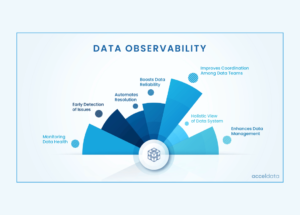
Data has become an essential part of businesses in today’s data-driven world. The modern data warehouse is a centralized repository for storing and analyzing large volumes of diverse data. It provides a single source of truth for an organization’s data, supporting business intelligence and data analytics. In this article, we’ll explore what the modern data warehouse is, its key components, and how to build a scalable solution.
What is The Modern Data Warehouse?
A modern data warehouse is a centralized repository for storing and analyzing large volumes of diverse data. It supports business intelligence and data analytics by providing a single source of truth for an organization’s data. The modern data warehouse has evolved over time to address the changing needs of businesses in a data-driven world.
Key Components of a Modern Data Warehouse
The modern data warehouse is designed to handle structured and unstructured data, including data from sources such as social media, log files, and sensors. This diverse data must be integrated and transformed into a usable form for analysis. The modern data warehouse must provide a flexible and scalable data ingestion solution to handle this integration and transformation.
The modern data warehouse must also support both batch and real-time processing and provide a flexible solution for data access, including the ability to connect to multiple data sources, as well as the ability to perform complex analyses and create interactive dashboards. To support these needs, the modern data warehouse is often built using a combination of technologies, including:
Data Ingestion: Data ingestion refers to the process of bringing data into the data warehouse. The modern data warehouse must support real-time and batch data ingestion, as well as handle the integration and transformation of diverse data types. Tools such as Apache Kafka, Apache NiFi, and Apache Flume are commonly used for data ingestion.
Data Storage: Data storage refers to the process of storing data in the data warehouse. The modern data warehouse must provide a scalable and efficient solution for storing large amounts of data. Tools such as Apache Hadoop and Apache Cassandra are commonly used for data storage.
Data Processing: Data processing refers to the process of transforming and analyzing data in the data warehouse. The modern data warehouse must support both batch and real-time processing, and provide a flexible solution for handling diverse data types. Tools such as Apache Spark and Apache Flink are commonly used for data processing.
Data Visualization: Data visualization refers to the process of presenting data in a visual format, such as charts and graphs, to support business intelligence and data analytics. The modern data warehouse must provide a flexible and scalable solution for data visualization. Tools such as Tableau and PowerBI are commonly used for data visualization.
Building a Scalable Modern Data Warehouse Solution
In addition to the technical components, the modern data warehouse must also address the needs of the business. This includes issues such as data governance, data quality, and data security. The modern data warehouse must provide a solution for managing these issues, as well as provide a flexible and scalable solution for data access, analysis, and visualization.
To build a scalable modern data warehouse solution, consider the following best practices:
Choose the right data ingestion tools: The right data ingestion tools will depend on your data sources and the frequency of updates. Choose tools that can handle real-time and batch data ingestion and support the integration and transformation of diverse data types.
Select an efficient data storage solution: Choose a data storage solution that provides scalable and efficient storage for large amounts of data. Consider solutions that provide efficient retrieval and query performance, as well as robust data security and data management features.
Use appropriate data processing tools: The right data processing tools will depend on the type and volume of data you need to analyze. Consider tools that can handle both batch and real-time processing, and provide a flexible solution for diverse data types.
Implement proper data governance: Implementing proper data governance is essential for ensuring data quality, security, and compliance. Consider solutions that provide robust data management and data security features, as well as data lineage and data auditing capabilities.
Invest in data visualization tools: Investing in data visualization tools is essential for supporting business intelligence and data analytics. Choose tools that provide flexible and scalable visualization capabilities, as well as the ability to create interactive dashboards and reports.
Plan for scalability: Building a scalable modern data warehouse requires careful planning and the ability to adapt to changing business needs. Consider solutions that can be easily scaled and adapted to meet future needs, as well as tools that provide robust performance and data management capabilities.
The modern data warehouse is a centralized repository for storing and analyzing large volumes of diverse data. It provides a single source of truth for an organization’s data and supports business intelligence and data analytics. Building a scalable modern data warehouse solution requires careful planning and the integration of the right technical components, as well as a focus on data governance, data quality, and data security. By following the best practices outlined in this article, you can build a robust and scalable modern data warehouse solution that meets the needs of your business.
Please join our Newsletter to be updated with our content and check our Blog for more articles like this.
Don’t forget to share it on social media channels with your friends!





